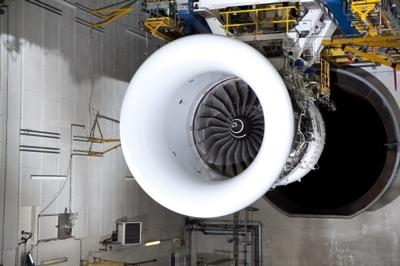Thu, Sep 16, 2021
AD 2021-17-11 Requires Initial And Repetitive Borescope Inspections (BSIs) Of The Affected IPC R1 Blades
The FAA is adopting a new airworthiness directive (AD) for certain Rolls-Royce Deutschland Ltd & Co KG (RRD) Trent XWB-75, Trent XWB-79, Trent XWB-79B, and Trent XWB-84 model turbofan engines.

This AD was prompted by reports of cracks in the intermediatepressure compressor (IPC) rotor 1 (R1) blades installed on certain Trent XWB model turbofan engines. This AD requires initial and repetitive borescope inspections (BSIs) of the affected IPC R1 blades and, depending on the results of the inspections, replacement of all 34 IPC R1 blades. The FAA is issuing this AD to address the unsafe condition on these products. This AD is effective October 12, 2021.
Supplementary Information: The FAA issued a notice of proposed rulemaking (NPRM) to amend 14 CFR part 39 by adding an AD that would apply to certain RRD Trent XWB-75, Trent XWB-79, Trent XWB-79B, and Trent XWB-84 model turbofan engines. The NPRM published in the Federal Register on May 28, 2021 (86 FR 28716). The NPRM was prompted by reports of cracks in the IPC R1 blades installed on certain Trent XWB model turbofan engines. The NPRM proposed to require initial and repetitive BSIs of the affected IPC R1 blades and, depending on the results of the inspections, replacement of all 34 IPC R1 blades with parts eligible for installation. The FAA is issuing this AD to address the unsafe condition on these products.
The European Union Aviation Safety Agency (EASA), which is the Technical Agent for the Member States of the European Community, has issued EASA AD 2020-0277, dated December 11, 2020 (referred to after this as “the MCAI”), to address the unsafe condition on these products. The MCAI states:
- Occurrences have been reported of finding cracked IPC R1 blades on certain Trent XWB engines that were close to their first planned refurbishment shop visit.
- This condition, if not corrected, could lead to blade failure and consequent engine inflight shut-down (IFSD), possibly resulting in reduced control of the aeroplane.
- To address this potential unsafe condition and avoid dual engine IFSD, Rolls-Royce issued the inspection NMSB to provide inspection instructions and the NMSB to provide information on threshold and intervals.
- For the reasons described above, this [EASA] AD requires repetitive inspections of the affected parts and, depending on findings, accomplishment of applicable corrective action(s).
You may obtain further information by examining the MCAI in the AD docket at www.regulations.gov by searching for and locating Docket No. FAA-2021-0381.
More News
From 2014 (YouTube Version): One Of The Airshow World's Pre-Eminent Formation Teams Chats About The State Of The Industry At EAA AirVenture 2014, ANN News Editor Tom Patton gets th>[...]
Tactical Air Navigation (TACAN) An ultra-high frequency electronic rho-theta air navigation aid which provides suitably equipped aircraft a continuous indication of bearing and dis>[...]
Aero Linx: Doobert Hi, we're Chris & Rachael Roy, founders and owners of Doobert. Chris is a technology guy in his “day” job and used his experience to create Doobe>[...]
The Airplane Was Spinning In A Nose-Down Attitude Before It Impacted Terrain On June 20, 2025, at 0900 eastern daylight time, a Pitts Aerobatics S-2B, N79AV, was destroyed when it >[...]
Also: United Elite Sues, Newark ATC Transitions, Discovery Moves?, Textron @ KOSH The Commemorative Air Force Airbase Arizona is taking its “Flying Legends of Victory Tour&rd>[...]
 Classic Aero-TV: Up Close And Personal - The Aeroshell Aerobatic Team at Oshkosh
Classic Aero-TV: Up Close And Personal - The Aeroshell Aerobatic Team at Oshkosh ANN's Daily Aero-Term (07.13.25): Tactical Air Navigation (TACAN)
ANN's Daily Aero-Term (07.13.25): Tactical Air Navigation (TACAN) ANN's Daily Aero-Linx (07.13.25)
ANN's Daily Aero-Linx (07.13.25) NTSB Prelim: Pitts S2
NTSB Prelim: Pitts S2 Airborne 07.09.25: B-17 Sentimental Journey, Airport Scandal, NORAD Intercepts
Airborne 07.09.25: B-17 Sentimental Journey, Airport Scandal, NORAD Intercepts



